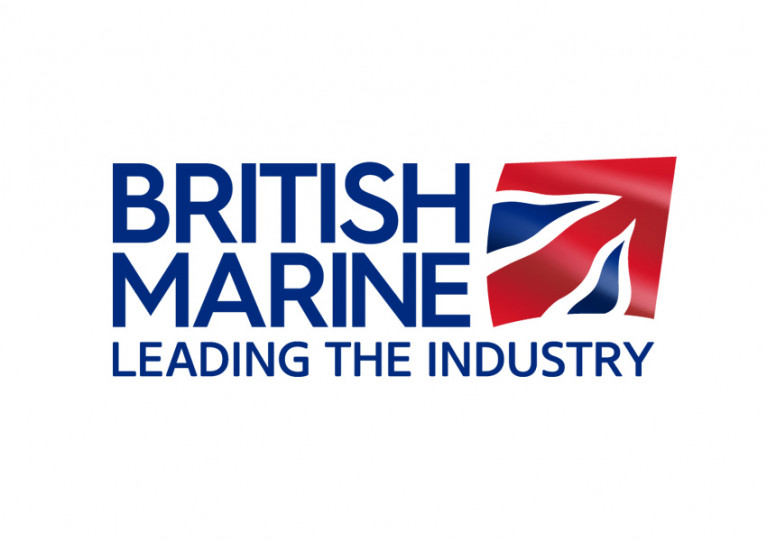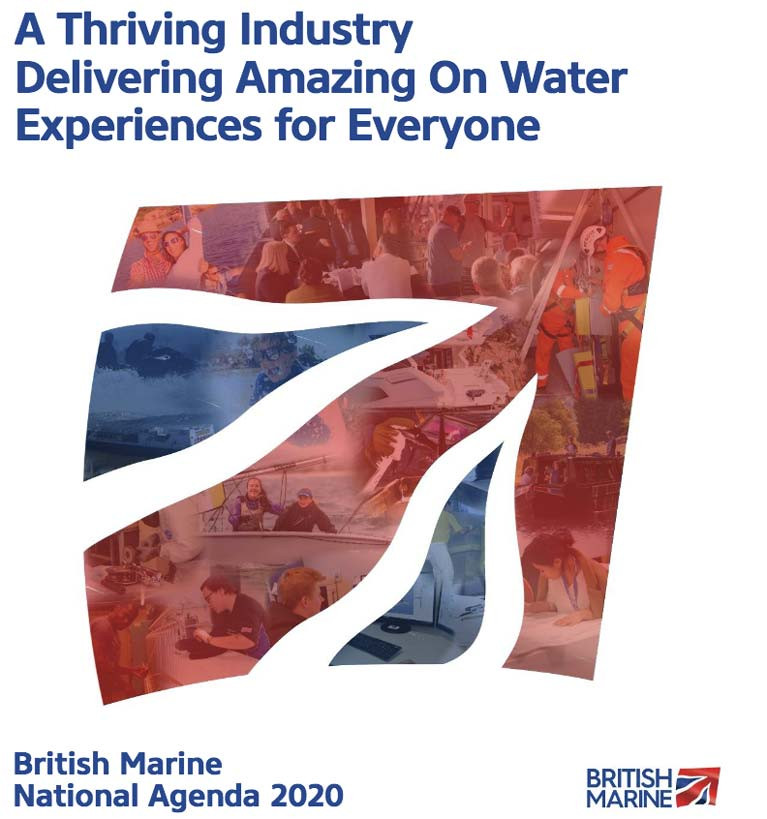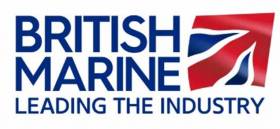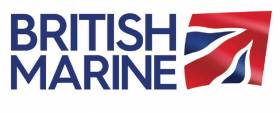Displaying items by tag: British marine
British Marine, the UK marine industry body, has released its latest Key Performance Indicators (KPI) report for the 2021/22 financial year, detailing a range of economic trends and statistics from across the UK leisure, superyacht and small commercial marine industry, which confirm that the marine industry enjoyed a successful post-pandemic bounce back.
“It is encouraging to see that the marine industry made a strong recovery post-pandemic, prospering in both domestic and international markets and highlighting the significant contribution the sector makes to the UK economy. These results show that the industry was in a strong position as we headed into more uncertain economic times in 2022/23”, commented Lesley Robinson, CEO of British Marine.
 Lesley Robinson, CEO of British Marine
Lesley Robinson, CEO of British Marine
The report includes data on marine industry revenue, full-time equivalent employment, gross value added to UK GDP, and international trade and national figures for business and consumer confidence. It also covers consumer inflation, household leisure spending and a range of other economic metrics relating to the financial performance of the UK economy and marine industry.
The report uses aggregated data shared by members, combined with internal knowledge of non-members involved in the marine industry and Government statistics, to provide a robust economic audit of the industry.
Some of the key findings from the report include:
- The UK marine industry bounced back from a year plagued by pandemic disruptions with like-for-like revenue growth of 25% in 2021/221. Total industry revenue was estimated at £4.23 billion – or 6.5% above its pre-pandemic level (2019/20 financial year).
- The industry’s direct GVA contribution to UK GDP is estimated to have grown 27% to £1.57 billion in 2021/22, showcasing the significant added value that marine businesses create for the UK economy.
- If we add to this the additional, indirect and induced economic contribution rendered by marine businesses through their employee and supply chain spending, as well as the hospitality spending of boating and watersports participants, the combined economic contribution of the marine industry is estimated to total £6.80 billion.
- With the re-opening of international markets post-pandemic, UK marine exports made a strong recovery in 2021/22, growing 13% to £1.22 billion, powered by the sale of UK-made boats. Sailboat exports grew 40% to £116 million, rigid inflatables increased 48% to £30 million and overseas powerboat sales were up 7% to £574 million.
- With domestic demand powering industry growth, imports also saw a robust increase in 2021/22, growing 8% year-on-year. Sales were driven by local demand for powerboats, with inboard and outboard powerboat imports up 32% to £109 million, rigid inflatables up 66% to £39 million and outboard engines up 40% to 22 million.
- Full-time equivalent jobs are estimated to have increased 5% to 38,100 in 2021/22, with early career training also seeing an increase as the industry’s profile grows. Government statistics show that apprenticeship starts have grown 36% (to 4,100) since 2019/20. This has been driven by increased post-pandemic manufacturing, with boatbuilding and marine engineering apprenticeships up 27% and 28%, respectively.
- This post-pandemic recovery has been driven by continued hunger for new and used boats at home and abroad, as well as marine equipment and accessories and ‘staycation’ boating experiences, as Britons continued to look to recreation on the water as an antidote to pandemic-related issues. These sectors experienced estimated revenue growth over the last year of 32%, 34% and 43%, respectively, their highest on record.
- Of course, economic events have changed rapidly since the end of the 2021/22 financial year in April, with high inflation and deteriorating consumer spending power eroding this boom. UK consumer confidence sank to its lowest index score on record in October 2022 (91.5)4, with consumers and businesses hit by a ‘cost of living’ crisis pushing the UK to the brink of recession. According to the latest Government figures (ONS), monthly GDP year-on-year growth slumped from 11.6% in January 2022 to 0.02% in January 2023.
- Whilst the marine industry has been resilient through this latter period (January 2022-January 2023), generally outperforming the wider UK economy, it has not been immune to the financial challenges now affecting UK businesses. British Marine’s latest sentiment survey (December 2022) indicates that the share of marine businesses seeing quarterly sales growth (year-on-year) dropped from 52% in Q1 2022 to 29% in Q4 2022. However, despite the decline in sales growth over the last six months, marine business confidence remained steady, with 49% of British Marine members reporting in December that they were still optimistic about their prospects going into 2023, and that is double the number of businesses pessimistic about their future.
“Overall, the report is reassuring. However, we must remain mindful that these figures related to 2021/2022 and the impact of the current ‘cost of living’ crisis and the overall financial challenges affecting many UK businesses may well have a future impact on the sector”, Lesley concluded.
British Marine has said recent guidance issued by the UK Government confirms that canal boats and other vessels in England are, in its view, eligible for COVID-19 recovery grants.
The Restart Grants were announced earlier this month by Britain’s Chancellor of the Exchequer, Rushi Sunak, and are issued by local authorities in England.
“This confirmation means that accommodation providers, such as vessels and canal boats, should be eligible for a one-off grant of up to £18,000 to support them throughout the ongoing pandemic and the subsequent restrictions on trading,” British Marine said.
The grant is exclusively for businesses which pay business rates, with the exact value of the grant determined by the businesses’ rateable value:
- Businesses occupying hereditaments appearing on the local rating list with a rateable value of exactly £15,000 or under on 1 April 2021 will receive a payment of £8,000.
- Businesses occupying hereditaments appearing on the local rating list with a rateable value over £15,000 and less than £51,000 on 1 April 2021 will receive a payment of £12,000.
- Businesses occupying hereditaments appearing on the local rating list with a rateable value of exactly £51,000 or over on 1 April 2021 will receive a payment of £18,000.
British Marine advises its members to contact their local authority to discuss their eligibility. Members can also visit British Marine’s COVID-19 microsite for the latest information.
The Royal Yachting Association (RYA) and British Marine have welcomed HM Revenue and Customs (HMRC) announcement of a six-month extension to the one-year grace period for Returned Goods Relief (RGR) previously put in place by the British Government.
The news yesterday (Thursday 25 March) extends the grace period for RGR until 30 June 2022 for all goods including recreational craft, regardless of when they left the UK, and follows representations from the RYA and British Marine asking for a three-year transition period.
Both organisations have argued that the one-year grace period effective from the end of the Brexit transition period, in respect of the three-year condition for RGR, was not sufficient — highlighting such issues as pandemic travel restrictions, Schengen Area immigration rules, insurance and the length of the sailing season.
This issue was central to a letter that the RYA and British Marine sent to the chief executive of HMRC in February, calling for a holistic approach to addressing the post-Brexit issues impacting on recreational boat owners and the British leisure marine industry.
Howard Pridding, the RYA’s director of external affairs, said: “The HMRC announcement is timely, as we have seen additional concerns from members about the new restrictions on leaving the UK announced this week.
"We will continue our constructive dialogue with HMRC on all outstanding post-Brexit issues, including the repatriation of boats that have not been in the UK under their current ownership, and look forward to receiving a full response from the HMRC chief executive on the points that we have raised.”
Lesley Robinson, CEO of British Marine, added: “This collaborative work with the RYA shows that together we can better influence matters affecting the leisure marine sector and boaters.
“Whilst we requested and set out a strong case for a three-year RGR transition period, the six-month extension is welcomed.
“However, given the current restrictions on international travel, we hope HMRC will demonstrate flexibility to the extension to allow all UK boat owners to return their boats in a safe weather window. This flexibility would also be welcomed by UK boat retailers and brokers in order to keep fulfilling the rising demand for second-hand boats in the UK.”
Demand for boats and other watercraft has grown during COVID-19 restrictions in the UK, according to industry body British Marine.
The rebound last summer — following a dramatic 40% sales slump between March and May 2020 as the first lockdowns were imposed — appears to have been fuelled by a surge in domestic tourism amid curtailments on international travel.
Data from Boats Group shows that overall sales from June to the end of the year grew more than 50% over the same period in 2019.
And some of the biggest gains were in more expensive (>£100,000) boats, which in 2020 enjoyed an 18% rise in unit sales over the previous year.
“Last summer we were seeing evidence and hearing regular news about the staycation effect and boom in sales for leisure marine businesses,” British Marine chief executive Lesley Robinson said.
“However I am delighted that these anecdotal stories are now backed up with the empirical data.”
British Marine & RYA Highlight New Costs of Trading Second-Hand Boats Between the UK & EU
Following the release of the UK - EU Trade and Cooperation Agreement British Marine and the Royal Yachting Association (RYA) have been working to understand the impact of various aspects of the agreement on both the marine industry and recreational boat owners.
British Marine and the RYA have now received further information from both the EU Commission and the UK Department for Business, Energy and Industrial Strategy (BEIS) on the trade of pre-owned CE marked recreational craft between the UK and EU following the UK’s exit from the European Union.
Both the UK and EU have confirmed that any vessel being traded second-hand between the UK and EU will be required to meet the obligations set out in either the Recreational Craft Directive (RCD) in the EU or the Recreational Craft Regulations (RCR) in the UK when placed on either market after the 1 January 2021.
UK Conformity Assessed
Therefore, this means that a pre-owned vessel being imported from the EU to be placed on the UK market will, after 1 January 2022, be required to obtain a new UK Conformity Assessed (UKCA) mark in line with the requirements of the RCR. In order to obtain a UKCA mark, a boat will require a Post Construction Assessment and third-party verification.
Pre-owned CE marked vessels
Similar rules will apply when selling vessels into the EU. Pre-owned CE marked vessels that were in the UK at the time of departure, 11pm on the 31 December 2020, when exported to the EU will be required to undergo recertification of the CE mark when being placed on the EU market. This means a boat will require a Post Construction Assessment in line with the RCD and third-party verification.
As Afloat reported previously, boat brokerages, distributors, boat owners and buyers may well be heavily affected by this post-Brexit position, as the responsibility will fall upon them to ensure a vessel meets the applicable requirements before buying and selling second-hand boats between the UK and EU. Estimated costs of Post Construction Assessments and verification are between 500-5000 GBP dependent on the vessel.
British Marine and the RYA are currently liaising with the European Boating Industry association in order to raise concerns with this position in Europe whilst also directly engaging with BEIS in the UK.
Lesley Robinson, CEO of British Marine, commented; “As a consequence of Brexit, this is a complex and potentially difficult situation. Faced with the process of individual boat re-certification, boat builders, brokers and consumers will be impacted in terms of both time and cost when selling and buying second-hand boats cross borders. At this stage in time, British Marine is working hard to represent affected members and seek clarification of the exact ramifications of these regulations.”
Howard Pridding, RYA Director of External Affairs, said; “This is yet another unanticipated and unwelcome aspect of Brexit which could affect many owners financially through no fault of their own. We are working in partnership with industry to better understand and mitigate the situation and potential cost burden.”
Following the Prime Minister's announcement on Monday 22 February outlining the roadmap of when restrictions are likely to be eased across England, British Marine met with the Department for Environment, Food and Rural Affairs (DEFRA) to clarify the guidance specific to the leisure marine industry. Representatives from the Department for Transport, the Department for Digital, Culture, Media and Sport, navigation authorities, and user groups from across the sector also took part in the meeting.
The following statement and matrix (downloadable below) have been produced, and approved by Government, detailing how British Marine members should interpret the guidance:
On 22 February, the Prime Minister announced the Government's roadmap to cautiously ease lockdown restrictions in England. The design of the roadmap has been informed by the latest scientific evidence and seeks a balance between our key social and economic priorities whilst preserving the health and safety of the country. The scientific evidence shows that opening too early or too quickly risks a further lockdown.
The approach focuses on data, not dates. Each step has a "no earlier than" date, five weeks later than the previous step, to allow time to assess the impact of the previous step and provide a week's notice before changes occur. The steps for easing restrictions will be taken at the same time across England in a national approach, in the absence of a significant regional disparity.
At each step, the Government will make an assessment against the following four tests:
- The vaccine deployment programme continues successfully.
- Evidence shows vaccines are sufficiently effective in reducing hospitalisations and deaths in those vaccinated.
- Infection rates do not risk a surge in hospitalisations which would put unsustainable pressure on the NHS.
- Our assessment of the risks is not fundamentally changed by new Variants of Concern.
From 29 March, as part of the first step, Stay at Home restrictions will be lifted. The Government will continue to advise that people minimise travel up to and including Step 3. This means avoiding making unnecessary journeys, combining trips and avoiding travel at peak times where possible. People should avoid travelling further than is reasonably necessary to take part in their activity - for instance visiting shops or making use of services closer to home.
All references to permitted activities below assume that boats allow for social distancing rules to be adhered to. COVID-Secure guidance will also remain in place up to and including Step 3 (subject to a proposed review of social distancing rules ahead of Step 4).
Premises must not cater for groups larger than the legal limits at each step unless meeting the conditions for a permitted organised gathering. These will be reintroduced at Step 2 for outdoor gatherings and Step 3 for indoor gatherings. These gatherings or events must be operated by a business, charity, public body or similar organisation and can be organised subject to specific conditions: that they comply with COVID-Secure guidance, including taking reasonable steps to limit the risk of transmission, complete a related risk assessment; and ensure that those attending do not mix beyond what is permitted by the social contact limits (unless another exemption exists, such as for organised sport or exercise, supervised activities for children or a significant life event).
Download the matrix of the reopening in the word doc below.
Call for Holistic Approach to Issues Facing British Boaters & Marine Industry Post-Brexit
British Marine and the RYA have written a joint letter to the head of Britain’s HM Revenue & Customs to call for a holistic approach to the various issues facing private pleasure boaters, the second-hand market and the wider industry post-Brexit.
According to Marine Industry News, the letter covers such issues as the ‘VAT trap’ for British boaters, repatriation of vessels as pandemic restrictions continue, and the status of and reporting requirements for boats lying in Northern Ireland waters.
The two organisations are specifically calling for an extension of the one-year grace period for Returned Goods Relief to three years, on account of the various difficulties boaters currently face in regard to moving their vessels around Europe.
Howard Pridding of the RYA said: “Following months of dialogue with officials and exchanges with ministers at HMRC, we are now appealing directly to the chief executive of HMRC to bring coordination to urgently address the outstanding issues and deliver clear and unambiguous guidance that we can share with our members.”
The move comes in the same week that the Cruising Association launched its campaign for a 180-day cruising visa separate from the 90-day Schengen visa system, which would help preserve British cruisers’ traditional routes to the Netherlands, Greece, Spain and Portugal.
British Marine Launch Ambitious Vision for the Industry
Following the announcement of its first-ever National Agenda, British Marine has today (4 February 2020) launched an ambitious plan to drive its vision of a thriving industry delivering amazing on-water experience for everyone.
Unveiled at the British Marine Spring Expo 2020, the exciting plan brings greater clarity and focus to British Marine’s efforts, easily demonstrating to all its members the one-of-a-kind services it offers and how these are harmonised to their activities.
Emphasising on the necessity for a National Agenda, Lesley Robinson, British Marine CEO, commented: “The marine industry in 2020 is facing great changes which require decisive responses. Shifting consumer habits and values, technological advancements and environmental pressures are combining to completely reshape the market as we have experienced it in past decades.
“Disrupted times offer great opportunity, provided you are prepared and bold enough to drive the agenda. That is why we have embraced an ambitious and exciting vision and delivered a bold National Agenda which we see as our pole star for a bright future. It’s a clear declaration of British Marine’s determination to play a significant and measurable role in supporting our members.”
Focusing on each distinct pillar of the National Agenda – Participation, People & Skills, Environment, Technology & Innovation and Representation, the assertive plan presents a deliverable set of key priorities which are being executed instantaneously. It has been crafted by British Marine’s executive team working in close collaboration with elected member representatives.
The exciting priorities outlined in the Agenda include:
- Powerful insights on how companies can adapt their products and services to changing consumer demands
- New paths for companies to attract and retain the right people with the right skills sets, as well as enhancing diversity within the workforce
- Promoting the sustainable operation and development of the marine industry, assisting members as well as their customers with minimising impacts on the environment
- Enabling greater technological understanding and collaboration, working with members to innovate and use new technology to grow their market
- Promoting the UK marine industry with external stakeholders to enhance and protect members’ domestic and international profiles, prospects and interests
Annually, the National Agenda will be measured, reported and updated to ensure that the Association’s expert skills and leading resources are directed towards areas of the most value for its members. This is fundamental to the Association’s progressive ‘member first’ mission to deliver outstanding services, representation and products to promote the sustainable success of its members. It guarantees that members are continually placed front and centre of all British Marine’s activities with service that is personalised to needs, easily accessible and always available.
To download a full copy of the British Marine National Agenda here
British Marine Report Success at Metstrade 2019
Last week brought success for Britain’s thriving marine equipment sector with UK companies picking up a string of accolades and revelling in a flourish of business opportunities at the world’s largest trade marine equipment exhibition, METSTRADE 2019.
The event kicked off with British designed and manufactured products receiving a third of the accolades presented at this year’s DAME Design Awards. Overall, British Marine members dominated the list of companies to be honoured. The latest products from Raymarine UK, Lumishore, Marlow Ropes, Scanstrut and Dometic received Special Mentions, whilst Category Winners included products from LIGNIA Wood Company Ltd, Garmin Europe Ltd and Navico.
Less than 24 hours later, two more UK brands were celebrating wins at the prestigious IBI-METSTRADE Boat Builder Awards 2019. Spirit Yachts’ innovative manufacturing process and yacht designs saw it awarded the best ‘Environmental Initiative’ of 2019 while Princess Yachts’ apprenticeship scheme and leadership pathways received the Best Apprenticeship and Trainee Scheme award.
Throughout the whole three-day event, 155 British companies spread across the exhibition had another fantastic Show with a football of 17,792 unique visitors looking to discover the next generation of product development.
Ranked the second biggest and most popular country pavilion, the British Pavilion was a hive of activity with many of its 60 exhibiting companies reporting business success. At its heart, the British Marine stand was constantly packed with international delegates and members meeting to do deals.
Eifrion Evans, CEO of Lumishore, who had stands in both the British Pavilion and Superyacht Pavilion, commented: “METSTRADE continues to surpass mine and Lumishore’s expectations. The superbly presented British Pavilion and Superyacht Pavilion generated significant interest in Lumishore’s new underwater and newly launched above water lighting range, the Lux Lighting Collection. At times, we were completely inundated with existing and new customers.”
Clay Builder from Nautibuoy Marine, who exhibited in the British cluster within the Superyacht Pavilion, added: “It was the best METSTRADE Show we have ever had. As well as making sales on the stand, we met with key industry people and have generated a huge amount of leads and interest in our range of products. It was super to see the response to our new X-shade, which we officially launched in Amsterdam. Our feeling for business in 2020 is incredibly positive. Thanks to organisers for making it so easy and to the hospitality team who provided us with great food and beverages. We are already excited about attending next year.”
On the Wednesday, British Marine hosted the Netherlands’ Country Director for the Department for International Trade, Michiel Veldhuizen. Whilst at the event, he met with several British Marine members including LIGNIA Wood Company, Marlow Ropes, Scanstrut, Exposure Lights, Crewsaver and Rapid Marine.
This was followed by another hugely successful Meet the Buyer Networking Reception. British Marine’s most popular overseas event and a highlight of the British Pavilion, it once again welcomed 150+ visitors and exhibitors for an evening of networking, drinks and live music.
Lesley Robinson, British Marine CEO, commented: “I am hugely proud of all the UK businesses who picked up accolades at both the DAME Design Awards and IBI-METSTRADE Boat Builder Awards, as well as all the British companies who enjoyed business success at this year’s METSTRADE.
“This is testament to the strength of Britain’s marine industry. Despite the political uncertainty at home, British companies are trading well, investing and planning for the future growth of their businesses.
“As British Marine we will continue to support our members at important overseas events, ensuring the UK retains its dominant position on the global market. Next on the calendar is boot Dusseldorf in January 2020 where we will be hosting a Showcase stand for members.”
UK Marine Industry Faces Increased Challenges
Only 22% of marine businesses reported an increase in revenue, 10% less than six months ago and 15% less than the pre-Brexit high five years previous
Just 6% of companies enjoying an increase in profits, 6% less than the previous six months and 23% less than the previous five years
Brexit uncertainty is taking its toll on consumer confidence, industry encouraged to embrace different business models and produce new offerings
New sentiment figures out today from British Marine, the trade association for the UK leisure, superyacht and small commercial marine industry, highlight the number of British marine businesses reporting an increase in revenue sinking to 22%, 10% less than November 2018. The new figures also show static profit margins for marine businesses, with just 6% of companies enjoying an increase in profits, 6% less than November 2018. Unsurprisingly business confidence within the sector is at its lowest level since autumn 2016.[1]
Domestically focused UK businesses, especially marine services, continue to experience flat markets with 7% of companies experiencing an increase in revenue over the last six months. The domestic market has previously benefited from Brexit, with a weaker pound seeing more Brits holidaying at home. However, the continued political uncertainty has started to take its toll on consumer confidence, causing a reduction in leisure spending.
Prices in hire and charter boats have dropped significantly since last summer with only 28% of businesses increasing prices compared to 52% in 2018. With less customers out on the water, businesses are competitively slashing their prices resulting in hire, charter and passenger boat prices dropping to their lowest level in over five years. Whilst hire, charter and passenger boat services saw a rise in the number of businesses reporting increased revenue[2] and profit[3] (following the recent drop in business outlook, revenue and profit sentiment in the summer of 2018) these figures are still in negative net balance.
Meanwhile, brokerages are contending with reduced activity, as well as reduced stock due to value of the pound and low domestic demand. Fleets of boats based in the UK have reduced due to an increase in overseas sales and ‘End of Life’ (when vessels are no longer used or have been abandoned) challenges – while price competition is further driving down sales revenue.
Lesley Robinson, CEO of British Marine, said: “These latest sentiment figures highlight the current risks to the long-term growth of the industry. Whilst Brexit uncertainty and a potential recession are factors completely out of our control, increasing participation is not. It is crucial that the industry turns its focus to attracting new customers both old and young from a variety of backgrounds. Building the future generation of boating enthusiasts is key to the future sustainability of the industry.
“As part of this, the industry needs to adapt to the changing consumer buying habits and embrace new business models that are successfully transforming other sectors. We are working with an array of partners at the Southampton International Boat Show 2019, powered by Borrow a Boat, to incorporate this change. This includes our collaboration with the title sponsor Borrow A Boat to get over 10,000 people out on the water throughout the 10 days of the Show, helping to shape the future of the industry.”


































































